All about the chrysoprase stone
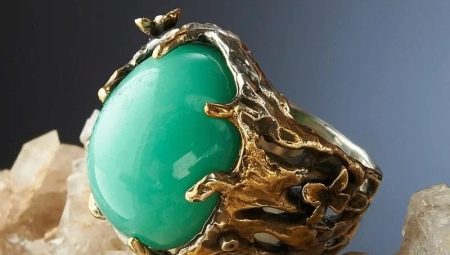
Chrysoprase is a semi-precious stone. In ancient times, people endowed it with magical and healing properties. It has not lost its popularity today and is widely used as an ornamental material.
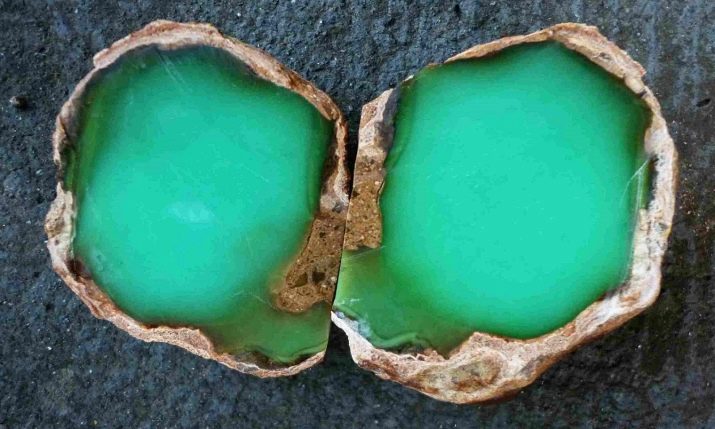
A bit of history
Chrysoprase is a rare and, perhaps, the most valuable of the chalcedony. The mention of a translucent stone of the color of the first green "chrysoprasus" was first encountered by Pliny in his historical treatise, published in 77 AD. NS. The name of the semi-precious stone comes from the Greek words "chrysos" (gold) and "prazon" (leek). In its current sounding, the term has entered scientific use since 1775 at the initiative of the German scientist I. G. Lehmann, who compiled a description of the mineral.
A close relative of chrysoprase is agate, belonging to the banded varieties of chalcedony. In it, parallel multi-colored layers diverge in a circular manner, like waves on water. Chrysoprase differs from agate in the absence of pronounced layering. It is more uniform, it is precisely the uniform color, brightness and purity that is valued in it, and in agate - a fancy pattern.

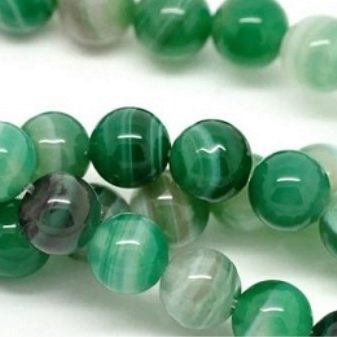
For jewelry, the mineral was used by ancient Greek, Roman and Egyptian craftsmen. The stone served as an excellent raw material for jewelry, amulets, gems with portraits of famous people and drawings of mythological scenes. Ancient healers applied the mineral to sore spots to cure gout and various skin diseases. In the event of mental disorders, the stone was applied to the temples. The ancients believed that if you stop your gaze on chrysoprase for a long time, you can avoid nervous breakdowns and heart disease.
The idea that the mineral helps to cleanse the body, eliminating toxins, stimulating the liver and strengthening the immune system, was also established in antiquity. That is why, nowadays, water infused with this mineral is drunk to heal the body and get rid of infectious diseases. At the time of the knights and troubadours, the stone was valued so much that in some European countries "luxury" and "chrysoprase" were used as synonyms... Everything was adorned with green mineral: housing, details of clothing and military ammunition, sets. A countless number of expertly crafted items, instructed by chrysoprase, have survived to this day, from brooches and pendants to lorgnets and snuff boxes.
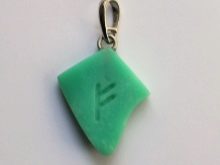
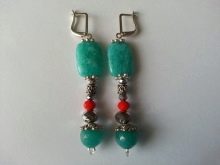
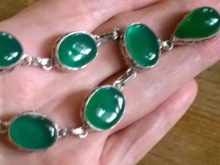
This "onion" miracle is perfectly combined with precious stones, forming a unique color scheme. The stone is truly versatile. In Potsdam, Germany, the medieval palace of Sanssouci is decorated with a wonderful chrysoprase mosaic. Many German churches are also rich in products from this mineral.
Not inferior to the cities of Germany and Prague, where the walls and ceilings of chapels and cathedrals are decorated with many mosaics of the XIV century. It was from this time that chrysoprase began to be widely used in many fields of art. We find elegant mosaic compositions in the chapels of St. Catherine in Karlštejn... The famous Karlstejn mosaic looks like a magic carpet. In the Prague Castle, the chapel of St. Wenceslas also has magnificent rare mosaic coverings.

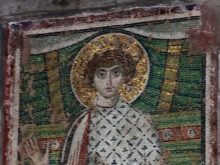
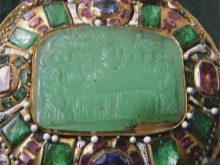
The history of the stone is replete with interesting facts, legends and beliefs. In ancient times, chrysoprase was considered the talisman of victorious warriors. The stone was honored by Alexander the Great and carried the talisman with him, believing that it is a powerful source of energy, giving endurance and courage, capable of predicting the future. Greek artists invariably depicted the Macedonian in a belt with a buckle adorned with chrysoprase. The inhabitants of ancient Rome believed that Venus patronized the owners of such a talisman, bestowing endless youth and acting as a guide to the heavenly abode of the gods.
The "onion" mineral was used as a talisman by wealthy people, supporting profitable deals and helping to avoid material damage. In Prussia, Frederick II wore a unique talisman ring with chrysoprase and, preferring the mineral to rubies and diamonds, collected a significant collection of stones in Sanssouci.
Catherine II wore a gold ring with an unusual stone. Elizabeth Taylor wore a wonderful chrysoprase ("Daisies") parure, believing that it would bring her good luck.
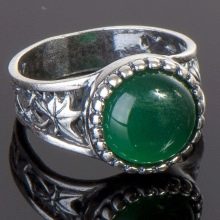

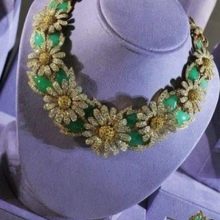
In Moscow, in the halls of the Armory Chamber, there are many skillfully made chrysoprase inserts used in rings, pendants and earrings. The mineral looks amazingly beautiful in necklaces and bracelets. The cut of the mineral is widespread in the form of cabochons. The attitude to chrysoprase is different for different peoples.
- In the East, for a long time, it has been believed that if the owner of chrysoprase is a liar, then the stone will eventually become dull and lose its valuable qualities. And for a kind person, the same stone restores its aesthetic, physical and magical properties.
- For the maximum realization of the magical abilities of the gem in Europe, it is recommended to wear it deliberately so that the talisman is always in front of our eyes.
- In India, it is believed that in an evil person the mineral is able to transform bad energy into positive one.
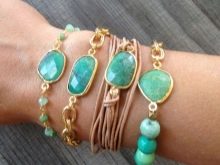
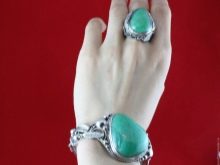
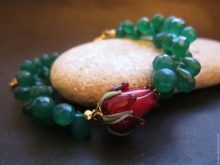
Characteristic
The mineral is a cryptocrystalline hydrous form of silicon dioxide containing some nickel. It is this compound that determines its color. The stone may contain impurities of opal and individual inclusions of talc and serpentine. There are often brittle dendritic growths formed by manganese oxides. Stone characteristics:
- hardness 6.5–7;
- average specific gravity - 2.6 g / cm3;
- refractive parameters - 1.530–1.543.
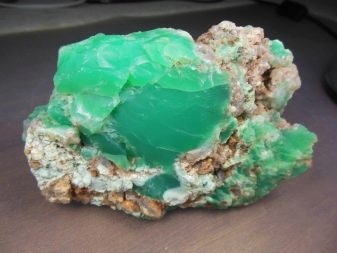
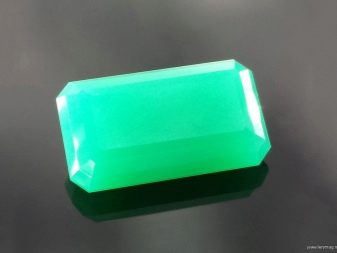
As a geological aggregate, the mineral consists of the smallest grains of crystalline origin 0.5–50 µm in size, distinguishable only with the help of a microscope. Unlike other, less transparent types of quartz, the mineral is valued not so much for its patterned patterns as for its color. Chrysoprase is rich in all colors and shades of green.
The predominant color of the mineral is green, lemon, apple, blue.
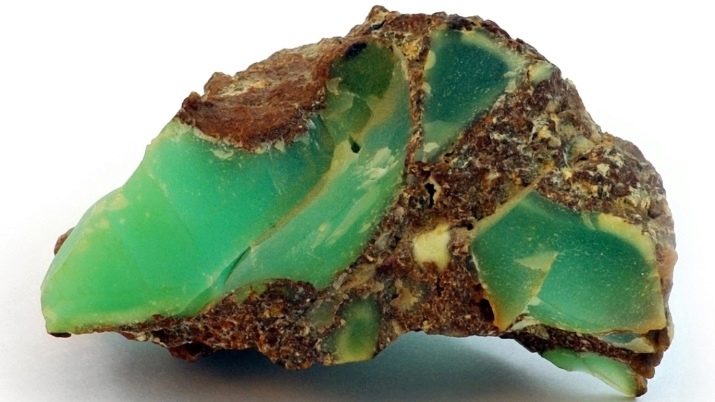
Among the many-faced chalcedony, the "onion" stone is rightfully considered the most impressive. High-quality specimens seem to be covered with gentle smooth transitions from a bluish, greenish gamut to thick emerald hues. The stone makes you admire it. There are 3 varieties of chrysoprase.
- Higher... Rich green, homogeneous structure. Has a bright intense color. It is considered the highest quality raw material for jewelers. Pieces of stone are clearly translucent to a depth of 5 cm. The mineral may include clay particles and iron hydroxides in a dispersed state.
- First... Apple greenish, homogeneous structure. Translucent only up to 2 cm. May include whitish opaque spots. Without picture.
- Second... Pale shades with spots. Ornamental stone. Mostly bluish-green or yellow-green in color with a heterogeneous structure. The color range of the mineral may contain whitish spots, as well as alternating transparent and opaque spots. Manganese oxides of the mineral sometimes form dendrites.
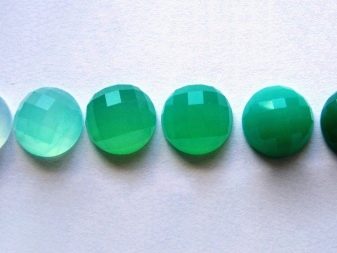
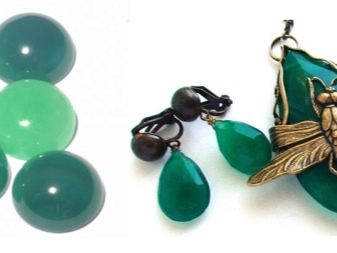
Chrysoprase is easy to process and cut, which determines its popularity among jewelers.
The material lends itself well to grinding and polishing, but it is difficult to bring the mineral to a mirror surface. The price range for products with this mineral is large, which determines its availability for different sectors of society. It is widely used for making cabochons and inserts.
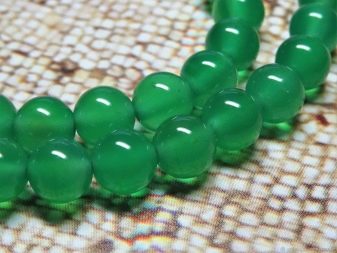
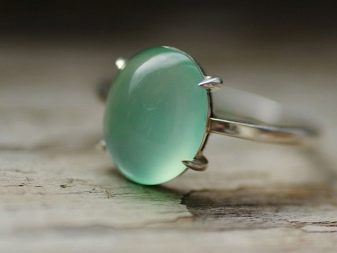
Place of Birth
Chrysoprase deposits are a rare find. It originates in the course of silicification of rocks with accompanying formation of hydrothermal formations. Contained in magma and sedimentary rocks, sometimes of placer origin. Often formed in the form of rock veins.
High-quality minerals are mined in Kazakhstan, Romania, near Pristina, Tanzania, Brazil (Goias state). The oldest deposit, developed since 1740, is located in Polish Silesia. Now it has been exhausted, but other fields have been discovered nearby and continue to work. The largest of them is Shklyary.
The Australian continent is rich in minerals. The largest chrysoprase field was discovered in 1963 in the eastern part of Queensland. The deposit is unique in that the veins of chrysoprase in it are up to 10 cm thick and often reach tens of meters in length. Significant reserves have also been discovered in the western regions of Australia. The remarkable emerald-colored mineral is mined in the Sierra Nevada (California).

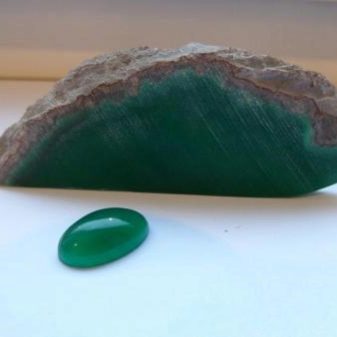
In Zimbabwe, a mineral of the rarest color was found: onion, herbal, apple-green, which is due to small disseminations of chromium-containing components. It was named after the location of the stocks of matorolite. Significant reserves of gem-quality minerals are rare. Among them, clusters in Poland, the USA, the Russian Federation in the Urals, in some regions of Kazakhstan and Australia can be distinguished.
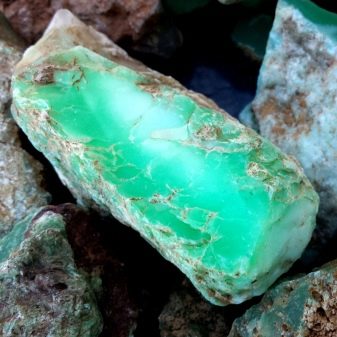
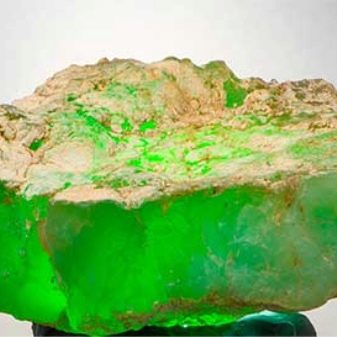
Healing and magical properties
According to its talismanic and healing properties, the "onion" mineral takes leading positions among other minerals and has a significant spiritual and psychological value for humans.
- Chrysoprase is a talisman for leaders, promotes the development of talents, dedication, strengthens strong-willed qualities, allows you to overcome insecurity.
- Relieves obsessive anxiety.
- It helps to strengthen the immune system, activates the brain, lowers blood pressure, is able to relieve stress and eliminate chronic fatigue, and helps to normalize sleep.
- Increases physical and psychological stability.
- Prevents spoilage, resists depression, blues, laziness.It is a mineral of positive and productive creative daring.
- Increases the body's energy and normalizes the work of the cardiovascular system.
- Balances the hormonal system, promotes the efficient functioning of the reproductive organs.
- Acts as a talisman against the evil eye, fear and nightmares.
- Promotes protection from failure and dark envy.
- How a healer removes sorrowful states, heals the consequences of unrequited love.
- Promotes the emergence and maintenance of love and friendship.
- If the owner of the stone has large sums of money, then chrysoprase protects him from unexpected loss of money.

Chrysoprase has a beneficial effect on visual impairment. In cases of eye diseases, it is recommended to carry the mineral with you and apply the daily ritual of contemplation. Resists insomnia.
Before going to bed, it is useful to leave the stone near the bed for a sound and healthy sleep.
The mineral is used to relieve sore throat and ear pain. It is useful for relieving asthma attacks. With sharp weather fluctuations, magnetic storms and changes in atmospheric pressure, the gem helps the body to overcome the conditions caused by natural disasters.


Who is it suitable for?
Chrysoprase is a talisman for people with an inquisitive inventive mind, for creative personalities, tirelessly striving for growth and development, ready to improve both themselves and the world around them. The mineral is suitable for athletes, travelers, for representatives of risk-related professions. It is to people leading an active lifestyle that the stone brings success in all good endeavors. It is desirable to have it for people who work with money, especially with large sums.
The stone is equally suitable for a woman and a man. Especially it suits green-eyed red-haired ladies who prefer a classic style dominated by black, white, yellow, beige and brown colors. The mineral gives women wisdom, men - strength and tolerance. Its versatility is due to the heterogeneous and rich color of the nuggets.
Chrysoprase allows a wide combination with other minerals and products made of silver and gold. Jewelry with it can be worn with a pomegranate. The stone looks great in a finger ring. The mineral is widely used as a round insert (cabochon) in a variety of jewelry. In the East, chrysoprase rosary is popular.
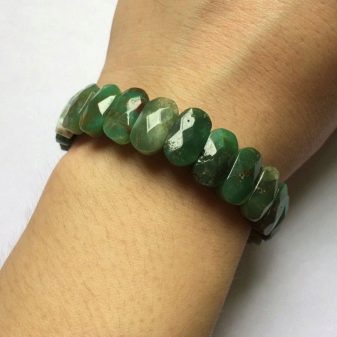
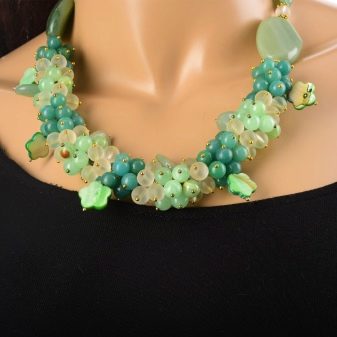
The mineral has universal compatibility and works with all zodiac signs. Especially suitable for those born under the constellations of Cancer and Capricorn. Astrologers claim that chrysoprase is strongly associated with the air element of Aquarius. The magical vibes of the stone are captured by almost every sign of the zodiac. There are no contraindications to its use, but one must take into account which of them the mineral is more suitable.
- Chrysoprase is a powerful amulet for Aries.
- Slow Taurus, owning a mineral, they become more active, mobile and purposeful.
- Twins will become much calmer. The mineral affects those who are prone to fuss and constant anxiety more noticeably.
- Cancer it is better to use the stone as an amulet. It will dim in advance if this sign of the zodiac is in for trouble, misfortune.
- Lions the wonderful properties of the stone are poorly felt.
- Virgin become wiser, analyze tense situations more thoroughly, begin to think more rationally.
- Libra the mineral acts neutral.
- Scorpions the stone makes you more fortunate and happy.
- Sagittarius a stone set in silver should be worn.
- Capricorns mood will rise, they will overcome depressive manifestations. The mineral will help jealous and apathetic natures.
- Aquarius closely related to chrysoprase. Representatives of this sign will be able to achieve their goals, fulfill their innermost desires. Especially if Aquarius is honest and merciful.
- Fishes feed on the energy of the stone, gaining new vitality.

Chrysoprase must constantly work, it should not be kept in a box all the time, since it loses its wonderful appearance, weakening its magical qualities.
How to distinguish from a fake?
Chinese-made synthetics (quetsite) are common fakes today. Often, an artificial cheap mineral colored in the required color with nickel salts is sold as chrysoprase. In addition, a natural mineral can be easily confused with another stone: emerald, cat's eye, jade or jadeite. To avoid cheating and mistakes when buying chrysoprase, it is important to have some knowledge.
- Real chrysoprase, or rather a product made of it, does not cost less than 2–3 thousand rubles (if we buy a product without metals: beads, bracelets made of whole cabochons).
- The average volume of a natural gem is 2 cm3. Larger items offered for sale are most likely fakes.
- In a mineral of natural origin, microbubbles, primary inclusions, which are traces of natural growth, can be seen (using a magnifying glass). Synthetics does not have such inclusions.
- Using a magnifying glass, you can see traces of dyes in a fake.
- Synthetic ketsite tends to have a richer and more uniform color.
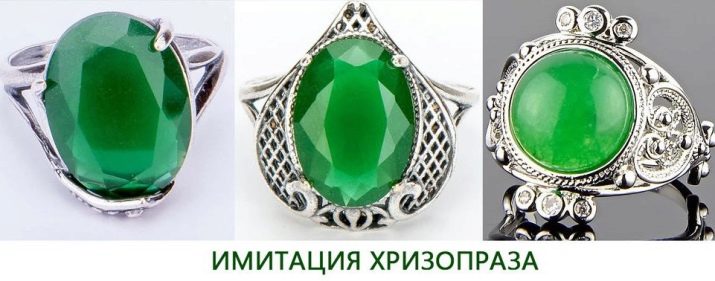
Artificially colored chrysoprase is called green onyx. It can be lemon green or blue in color. Green chalcedony is mined in Zimbabwe, the color of which is due to impurities of chromium. It is commonly called green agate or mtorolite.. Blue chrysoprase, which contains chrysocolla inclusions, is isolated separately. Recently, the stone has a large number of imitations made from cheaper chalcedony. Imitations are painted with chromium or nickel salts.
Only an expert can distinguish imitation from natural chrysoprase, using special methods of optical analysis and instruments (Chelsea filter, spectroscope).
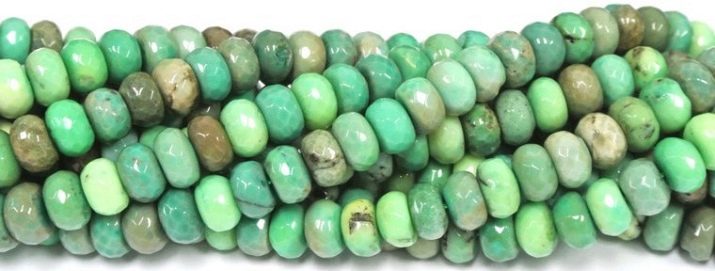
How to care?
In leaving, jewelry with chrysoprase is unpretentious, although respect and love will not be superfluous. To preserve the stone in the desired condition, it is necessary to clean it with soapy water and wipe it with a soft cloth. For the mineral, exposure to direct sunlight is harmful. In bright sun, the color of the mineral can fade.
To restore the previous state, the stone is wrapped in a damp cloth.
It is important to keep it away from chemicals, solid objects and overheating. To give chrysoprase more brightness and saturation, it is recommended to occasionally freeze it in a bowl of water... In this case, the defrosting process should occur naturally, without forcing the process.
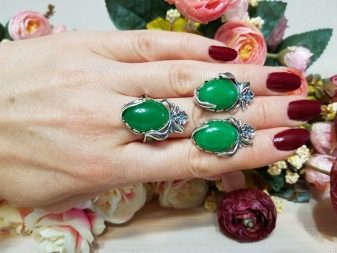
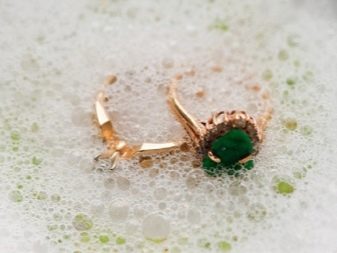
Beautiful examples
Many beautiful ones are created from chrysoprase products.
- The parure, made by the talented master jewelers of Van Cleef & Arpels Daisy for Elizabeth Taylor, is striking in its beauty. The actress firmly believed that the parure brings her good luck (photo 1).
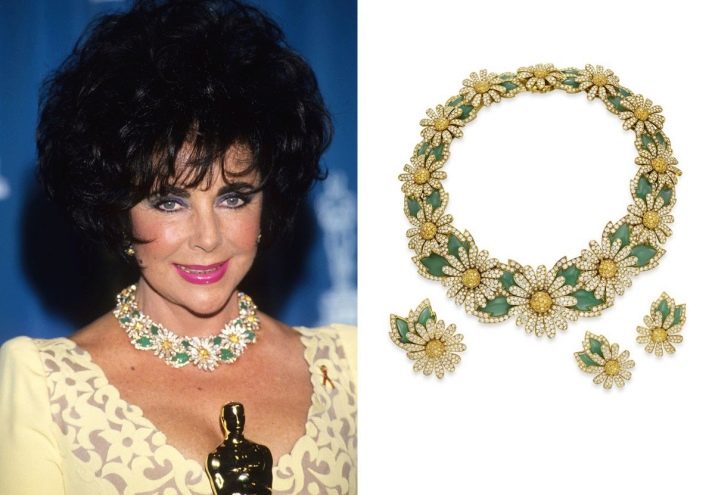
- Men's ring. A similar ring was worn by A. Makedonsky (photo 2).
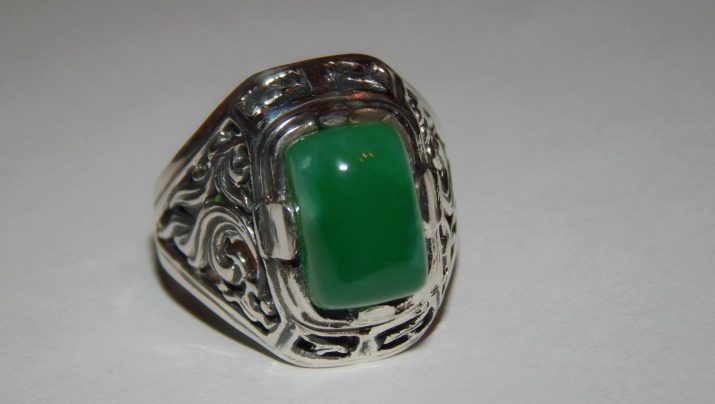
- Gilded Daphne Necklace with chrysoprase (photo 3).
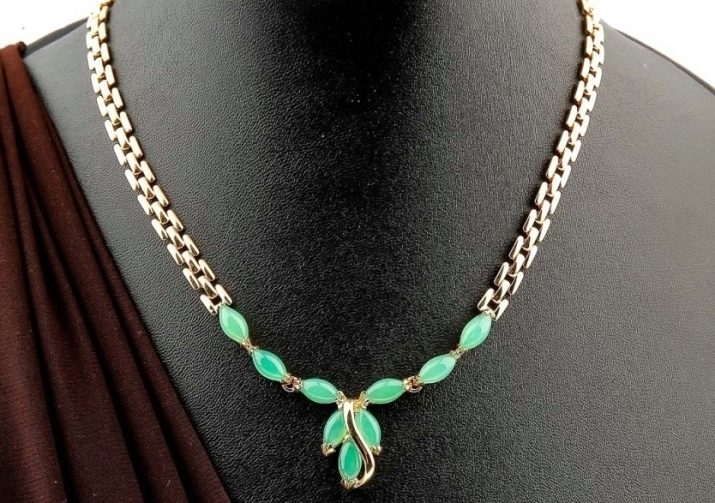
- Talisman for young businessmen (photo 4).

- Necklace with deep-colored chrysoprase (photo 5).
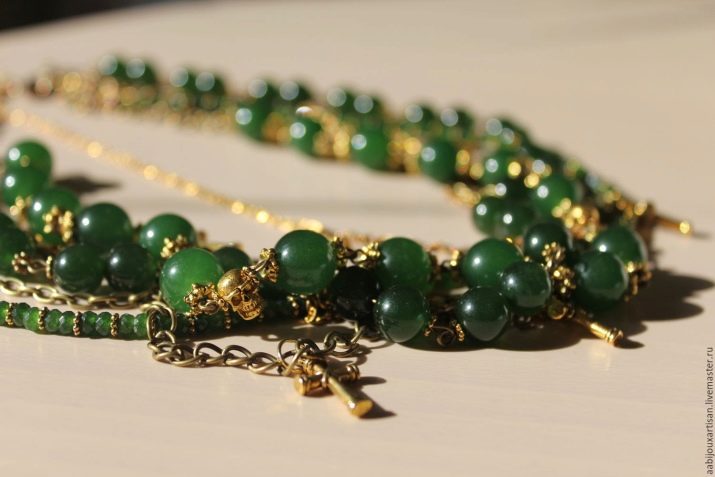
For the property of chrysoprase stone, see the next video.








